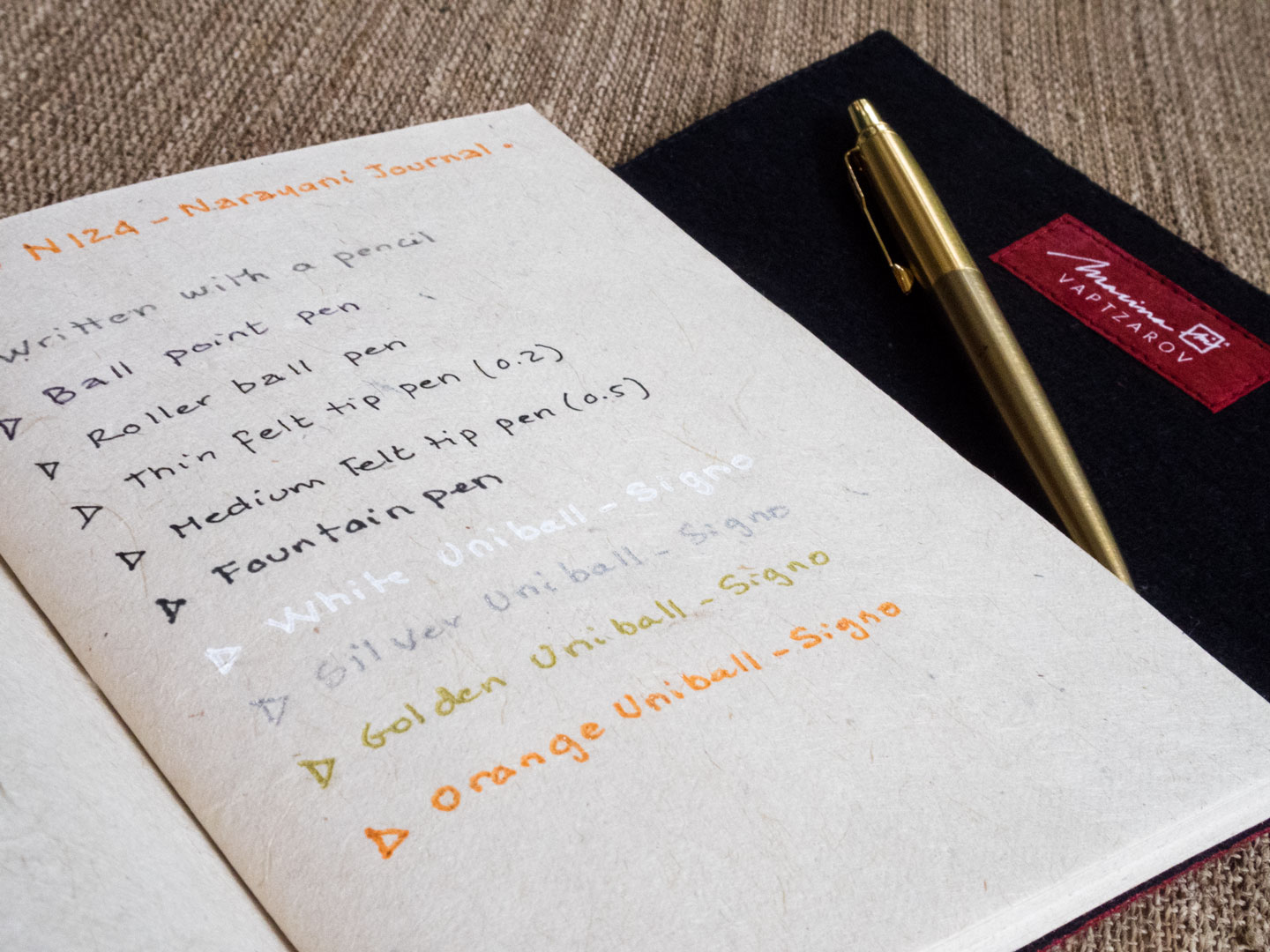Share this article
My simple guide about writing on the different types of handmade Daphne paper
Many of my customers and friends ask me about writing on handmade paper; with all the long fibres one may think the pen would not write smoothly, or that the ink will run though the fibres.
Imagine having a cotton ball where the fibers are very loose, once ink is applied the ink would bleed everywhere! Well, this wouldn’t happen if the paper is properly ‘calendered’. This means that several sheets of paper are sandwiched and pressed in between two big metal rollers. Writing is easier when the sheets are flattened, fibers are pressed together and there is nowhere for the ink to flow into.


An array of qualities and textures of Daphne paper exist and according to this, different mediums can in fact be used.
When drawing with oil or dry pastels and charcoal pens, traditional Daphne paper (N1-100/N3-100) is perfectly suited because the texture will render the drawing even livelier. Traditional Daphne paper is ‘unprocessed’; the paper is just removed from the frame where it dried, without further processing.
Crayons work well but color pencils will appear lighter in color on the Daphne texture.
I find that when using a fountain pen, you can still write on 100% Daphne paper; nevertheless this is still a handmade paper and therefore there will be imperfections. Apart from fountain pens, all other pens will work.
About Daphne paper
The original pure Daphne paper (N1-100/N3-100), handmade exclusively from the Daphne plant highly sought out for its genuine and pure quality. Authentic and natural, it will have one side smoother than the other.
The standard Daphne (N3C) paper found today in the local market, is a mix of recycled Daphne, pure Daphne and sometimes the Argeli bush. Best for writing with ball point pen or rollers.
Japanese Daphne paper (JN1) is produced with the Japanese paper-making technique, which creates sheets of paper that are perfectly smooth on both sides and extremely soft and appealing to the touch. Most mediums can be used on Japanese Daphne paper.
Daphne paper has several other qualities. Its longevity compared to industrial papers is the main quality. For centuries the Government of Nepal used it for official documents because the common paper-eating insects (e.g. Silver Fish) do not eat Daphne paper. It’s one of the strongest papers because of its very long fibers. It can even be difficult to tear!
Natural color Daphne paper is practically acid-free.
And so surprisingly light! A Daphne paper book seems very light compared to the industrial paper books we are used to. And to top it off, its wonderful to the touch and looks beautiful!
click to enlarge
Share this article














